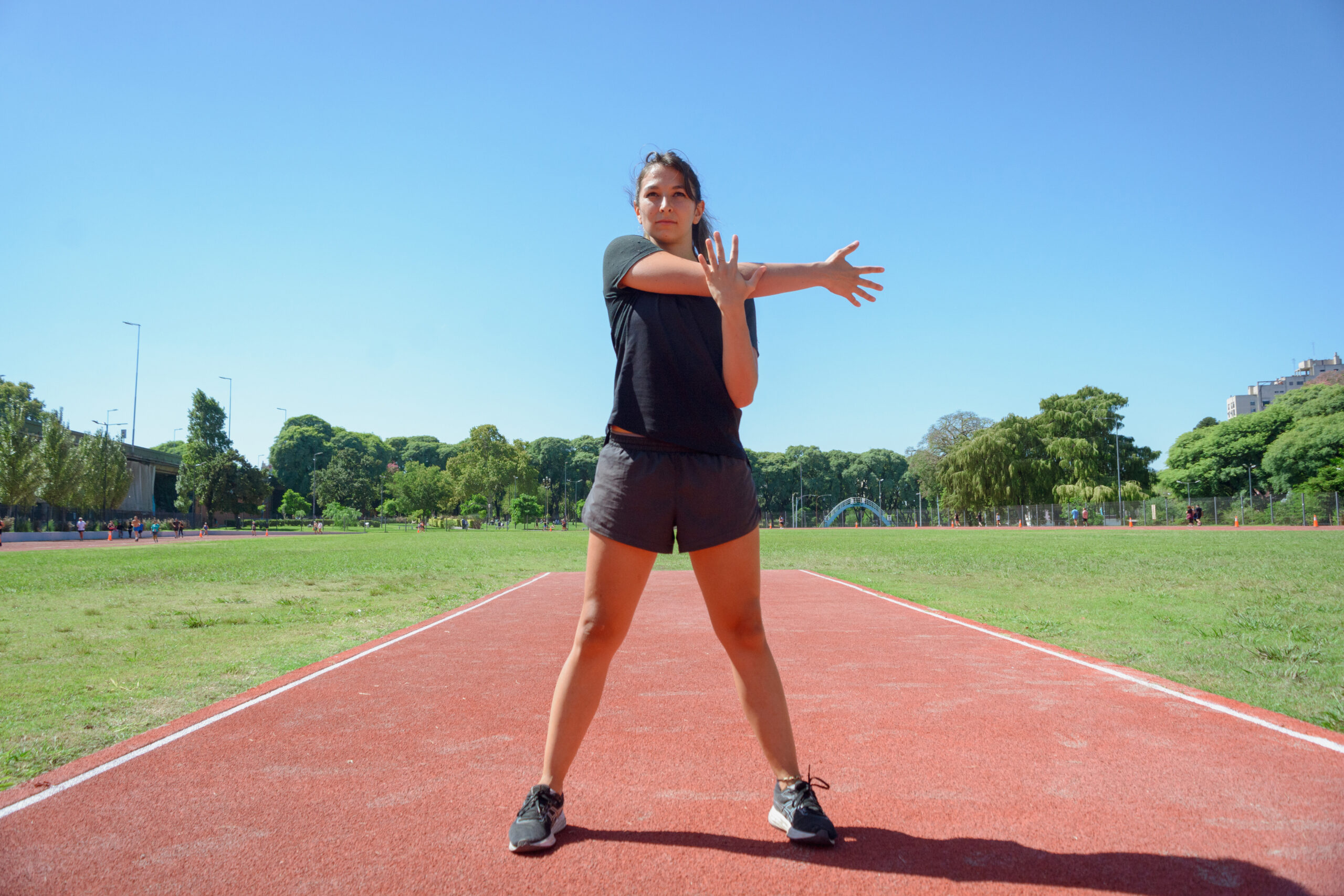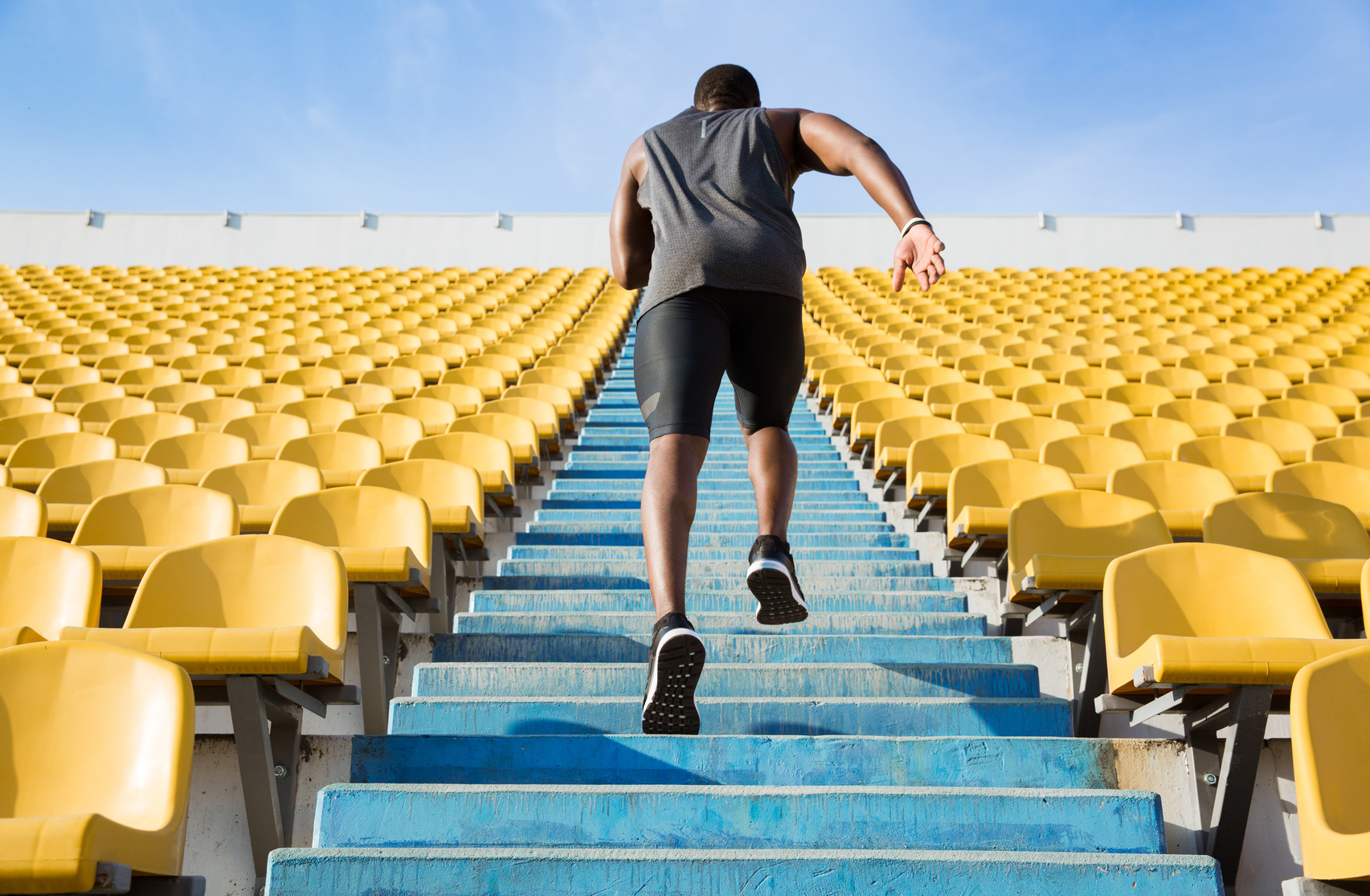Today I’m going to share with you another of my favorite exercise methods: stair training.
I first got interested in stair climbing workouts as means for improving my aerobic conditioning without spending more time hitting the pavement.
But as time progressed, I began also using it for lower body strength, agility, flexibility, and anaerobic conditioning.
Therefore, if you are thinking about adding a stair workout into your training program, then you came to the right place.
So are you excited?
Then here we go…
The Benefits of Stair Sprints Training
Here are some of the benefits to expect if you do stair workouts on a regular basis.
Improves VO2 max. The stairs can come in handy when you are looking to improve the maximum amount of oxygen used during intense training, AKA VO2 max.
In fact, just walking up 200 steps twice a day, five days a week for a period of two months can lead to a 17 percent increase in VO2 max, according to a study published in the British Journal of Sports Medicine.
Strengthens the legs. Climbing the stairs is one of the best exercises you can do to tone your lower body muscles, including your glutes, quads and calves, (but without the impact usually associated with running, or sprinting).
Costs nothing. As long you have access to a staircase, whether they are public stairs, bleachers, apartment blocks or stadium stairs, you are in the right place.
Offers variety. You can do all sorts of exercises on the staircase including, sprints, plyo moves, and variations of the standard bodyweight moves, such as push-ups, squats and lunges, adding more variety to your current training routine.
The Ultimate Stair Workout for Runners
I hope you are now aware of the many benefits that stair climbing has to offer.
Therefore, and without further ado, here is a high intensity interval training staircase workout I put together that cannot only help you boost fitness and strength, but also help you become the best runner you can be.
Find the Right Stairs
First off all, you need to locate a safe, well-lit stairs.
A high school or football stadium are some of the best venues to start stair training. You can also check out the bleachers or the local park for convenient stairs.
Nonetheless, if you couldn’t find any, then any large flight of stairs, even in your building or office, will work.
Next, make sure that the flight of stairs has at least 20 to 40 steps, or more.
It should take you up to 10 to 20 seconds to run up the whole flight.
Plus, make sure that your entire foot fits on the step tread.
This will make sure you have enough room to do the strength exercises, as well as help you run up and down without trouble.
Additional resource – Trx exercises for runners
Warming Up For Stair Workouts
Start your workout with the right warm-up to avoid muscle pulls and to get your body ready for the task ahead.
Jog slowly for 5 to 10 minutes, then do a set of dynamic moves, such as lunges, inchworms, squat, etc to loosen up your body and fire up your muscles.
Try this dynamic warm-up here.
Repeat it for two to three times before moving into the workout.
Note: Please be careful here. The workout I’m sharing with you today is intense, so if you haven’t done much intense exercise lately, then you need to be realistic and start with fewer reps, staying within your fitness skill the entire time.
So feel free to adjust the exercises below to your own fitness level and goals.
Nothing is written on stone here.
Stair Training Exercise One: Sprints
Begin facing the bottom of the stairs.
Next, sprint up the stairs as fast as you can, by pumping your arms vigorously by your sides and tapping each step and getting off that step as fast as you can, then walk back down to starting point.
Repeat six to eight more times, depending on your fitness levels and the length of the staircase.
Use proper technique when running up the stairs.
Keep most of your weight on the balls of your feet and knees aligned over your feet the entire time.
Please keep your back flat and run as straight as you can, allowing for no slouching or bending at the waist.
Stair Training Exercise Two: Step Forward Lunges
Begin at the bottom of the staircase, then step your right foot onto the second or third step, bending both knees to a 90-degree angle and lowering into a lunge.
Next, push off with your right foot, then propel yourself up the stairs, stepping your left leg up to meet your right, then stepping it forward and lowering into the next lunge.
Continue lunging forward until you reach the top of the stairs.
Keep your front knee tracking over your toes, and torso upright throughout the exercise.
Then walk down for recovery.
Stair Training Exercise Three: Squat Jumps
Start at the bottom of the stairs, then lower your hips down to a squat, engage your core, swing your arms, then hop up to the next step with both feet, landing in a squat.
Hold it for a moment, then jump up to the next step and keep squat jumping, transitioning effortlessly from squat to jump until you reach the top of the stairs.
If the steps are too close together, then jump high enough to skip two, even three, steps at a time.
Stair Training Exercise Four: Skip a Step
https://www.youtube.com/watch?v=ydAjynaxqbU
Just like Exercise One but this time aim to sprint-jump high enough to skip a step or two.
Then quickly walk down for recovery.
Make sure to pump your arms and keep good form on the way up.
Stair Training Exercise Five: Skater Steps
Stand facing the stairs, then step your left foot on the far-left end of the second step.
Next, push off with your left foot and hop onto your right foot, placing it to the right side of next step.
Continue ascending the stairs, alternating sides, until you reach the top of the stairs, then walk down for recovery.
Stair Training Exercise Six: Triceps Stair Dips
Begin by sitting on the edge of the second or third step, with feet on the floor and hands under your shoulders.
Raise your hips up until your arms are straight and extend your legs, resting your heels on the floor.
Make sure to keep your hands shoulder-width apart and shoulders down and away from ears the entire time.
That is your starting position.
Next, while engaging your core and keeping your butt lifted, start performing dips by lowering your body up and down.
Make sure the movement is coming from your arms, not from pushing your butt up and down.
Perform at least 12 to 15 reps to complete one set.
Stair Training Exercise Seven: Hop Ups
Begin at the base of the stairs with your feet slightly more than shoulder width apart and core engaged.
Next, hop up and down from the first or second step for 20 to 30 times without stopping, to complete one set.
Make sure to keep your hops powerful and fast.
Stair Training Exercise Eight: Mountain Climbers
https://www.youtube.com/watch?v=fBZHkGT0W5Y
Face the stairs, place your hands on the second or third step with your arms firm, legs extended behind you, and core engaged.
Next, lift your right foot off the floor then bring your right knee as close to your chest as possible.
Return to the starting position and switch sides.
Continue alternating legs, bringing your knee to your chest as fast as you can without losing form.
Do 16 reps on each side without pausing to complete one set.
Stair Training Exercise Nine: Single Leg Hops
Begin at the bottom of the stairs, then stand on your right leg with your left bent.
If you have balance problems, then make sure to lightly hold the railing or a wall for more balance and support.
Next, with core engaged and soft knees, jump up one step, then the next, until you complete the whole flight.
Then walk down for recovery, and switch sides.
I’d also recommend this speed ladder drills routine.
New to Running? Start Here…
If you’re serious about running, getting fit, and staying injury free, then make sure to download my Runners Blueprint Guide!
Inside this guide, you’ll learn how to start running and lose weight the easy and painless way. This is, in fact, your ultimate manifesto to becoming a faster and a stronger runner. And you want that, don’t you?
Click HERE to check out my Runners Blueprint System today!
Don’t miss out! My awesome running plan is just one click away.
Featured Image Credit – Lorna Jane via Flickr











